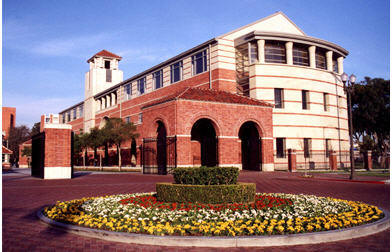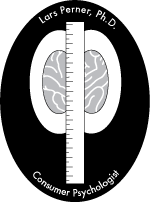 |
 |
|---|
Lars Perner, Ph.D.
Assistant Professor of Clinical Marketing
Department of Marketing
Marshall School of Business
University of Southern California
Los Angeles, CA 90089-0443, USA
(213) 740-7127
INTRODUCTION TO MARKETING
Background
Marketing. Several definitions have been proposed for the term marketing. Each tends to emphasize different issues. Memorizing a definition is unlikely to be useful; ultimately, it makes more sense to thinking of ways to benefit from creating customer value in the most effective way, subject to ethical and other constraints that one may have. The 2006 and 2007 definitions offered by the American Marketing Association are relatively similar, with the 2007 appearing a bit more concise. Note that the definitions make several points:
- A main objective of marketing is to create customer value.
- Marketing usually involves an exchange between buyers and sellers or between other parties.
- Marketing has an impact on the firm, its suppliers, its customers, and others affected by the firm’s choices.
- Marketing frequently involves enduring relationships between buyers, sellers, and other parties.
- Processes involved include “creating, communicating, delivering, and exchanging offerings.”
Delivering customer value. The central idea behind marketing is the idea that a firm or other entity will create something of value to one or more customers who, in turn, are willing to pay enough (or contribute other forms of value) to make the venture worthwhile considering opportunity costs. Value can be created in a number of different ways. Some firms manufacture basic products (e.g., bricks) but provide relatively little value above that. Other firms make products whose tangible value is supplemented by services (e.g., a computer manufacturer provides a computer loaded with software and provides a warranty, technical support, and software updates). It is not necessary for a firm to physically handle a product to add value—e.g., online airline reservation systems add value by (1) compiling information about available flight connections and fares, (2) allowing the customer to buy a ticket, (3) forwarding billing information to the airline, and (4) forwarding reservation information to the customer.
It should be noted that value must be examined from the point of view of the customer. Some customer segments value certain product attributes more than others. A very expensive product—relative to others in the category—may, in fact, represent great value to a particular customer segment because the benefits received are seen as even greater than the sacrifice made (usually in terms of money). Some segments have very unique and specific desires, and may value what—to some individuals—may seem a “lower quality” item—very highly.
Some forms of customer value. The marketing process involves ways that value can be created for the customer. Form utility involves the idea that the product is made available to the consumer in some form that is more useful than any commodities that are used to create it. A customer buys a chair, for example, rather than the wood and other components used to create the chair. Thus, the customer benefits from the specialization that allows the manufacturer to more efficiently create a chair than the customer could do himself or herself. Place utility refers to the idea that a product made available to the customer at a preferred location is worth more than one at the place of manufacture. It is much more convenient for the customer to be able to buy food items in a supermarket in his or her neighborhood than it is to pick up these from the farmer. Time utility involves the idea of having the product made available when needed by the customer. The customer may buy a turkey a few days before Thanksgiving without having to plan to have it available. Intermediaries take care of the logistics to have the turkeys—which are easily perishable and bulky to store in a freezer—available when customers demand them. Possession utility involves the idea that the consumer can go to one store and obtain a large assortment of goods from different manufacturers during one shopping occasion. Supermarkets combine food and other household items from a number of different suppliers in one place. Certain “superstores” such as the European hypermarkets and the Wal-Mart “super centers” combine even more items into one setting.
The marketing vs. the selling concept. Two approaches to marketing exist. The traditional selling concept emphasizes selling existing products. The philosophy here is that if a product is not selling, more aggressive measures must be taken to sell it—e.g., cutting price, advertising more, or hiring more aggressive (and obnoxious) sales-people. When the railroads started to lose business due to the advent of more effective trucks that could deliver goods right to the customer’s door, the railroads cut prices instead of recognizing that the customers ultimately wanted transportation of goods, not necessarily railroad transportation. Smith Corona, a manufacturer of typewriters, was too slow to realize that consumers wanted the ability to process documents and not typewriters per se. The marketing concept, in contrast, focuses on getting consumers what they seek, regardless of whether this entails coming up with entirely new products.
The 4 Ps—product, place (distribution), promotion, and price—represent the variables that are within the control of the firm (at least in the medium to long run). In contrast, the firm is faced with uncertainty from the environment.
Strategic Planning ![]()



